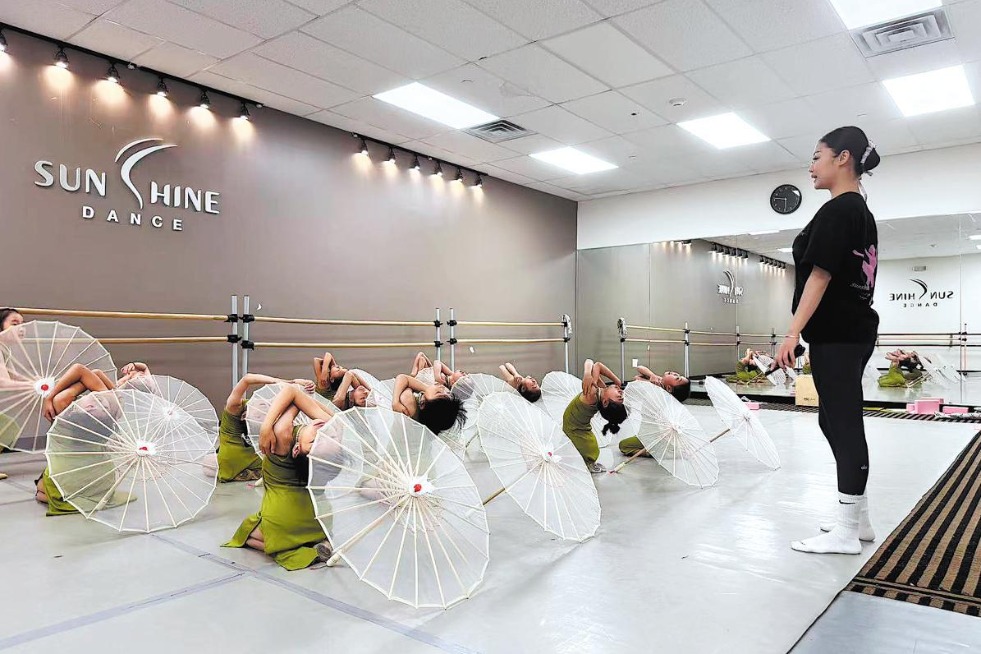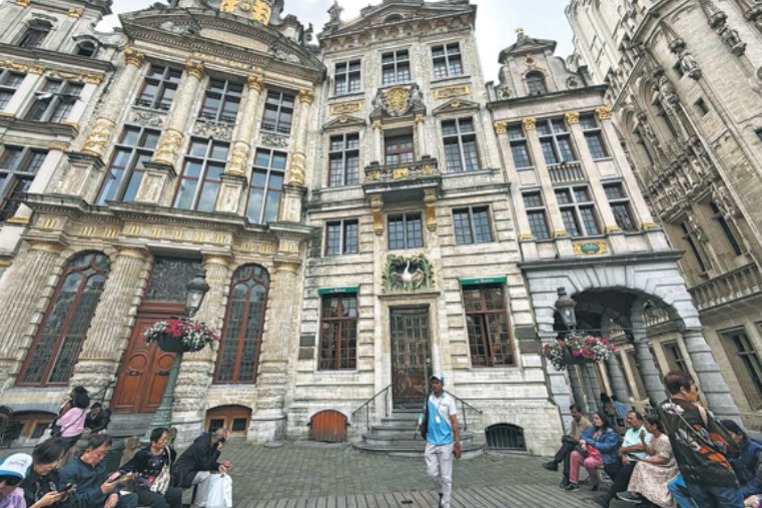The world on rice paper

A medium often used to depict soaring mountains in traditional Chinese painting is used in a different way by artist Wang Yizhou
Rice paper is one of the most important materials in traditional Chinese painting and writing. Its soft matte and refined texture give it a feeling of warmth.
But it was used effectively in an unconventional way in Insight, Shanghai artist Wang Yizhou's first solo exhibition in China, which also was dubbed Yi Zhi (异置), or Different Placement. Today Art Museum in Beijing hosted the exhibition early this year.
| High mountains was a major installation at Wang Yizhou's first solo exhibition at Today Art Museum in Beijing early this year. Photos provided to China Daily |
The major installation at the exhibition, High Mountains (高山), features mountain sculptures wrapped in Chinese traditional rice paper hanging upside-down.
Propped up by steel wires, the mountains have clearly defined bones and wrinkles that leave space for imagining rivers and streams flowing between them. After all, in traditional landscape ink wash drawing, mountains tend to be coupled with water. It creates a new way for people to view traditional landscapes in Chinese paintings.

An intriguing facet of High Mountains is that when people walk under these sculptures, they become part of the installation. When they look up, they can imagine standing under clouds as the light, still rice paper extends above their heads.
The installation and the hall also formed a delicate relationship: The flickering shadows on the white walls caused people to feel they were underwater watching boats pass, says Tan Ping, deputy director of the China Art Research Institute.
Wang's works are full of different clues and purviews. Another installation, Encounter (遇见), features rocks scattered around piles of rice paper. Here, rock, another common object that often appears in traditional old ink paintings, meets rice paper in a more solid form.
There are also eight ink wash paintings with acute lines that remind viewers of Western minimalism. Through these works, people enter three-dimensional ink wash paintings they'd previously only seen on paper. Wang's work displays a deep understanding of Chinese philosophy as well as the sophisticated practices of Western installation art.
"Wang's artwork echoes a call for respect for nature, which is central to Chinese philosophy, and also discusses the contradictions derived from industrial development that are emphasized by his use of Western experimental art," says Huang Du, the exhibition's curator.
Courtesy of The World of Chinese, www.theworldofchinese.com
The World of Chinese
| Top: Encounter features rocks scattered around piles of rice paper. Above: High Mountains features mountain sculptures wrapped with Chinese traditional rice paper hanging upside-down. |
(China Daily European Weekly 06/17/2016 page25)
Today's Top News
- Launch ceremony for Japanese version of Xi's discourses on Chinese modernization held in Tokyo
- Taiwan's chip gamble will spell its doom
- US visa policy policing students
- Generative AI facilitates smart governance
- Africa's green transition gets fresh vitality
- China-EU green ties set to expand
































